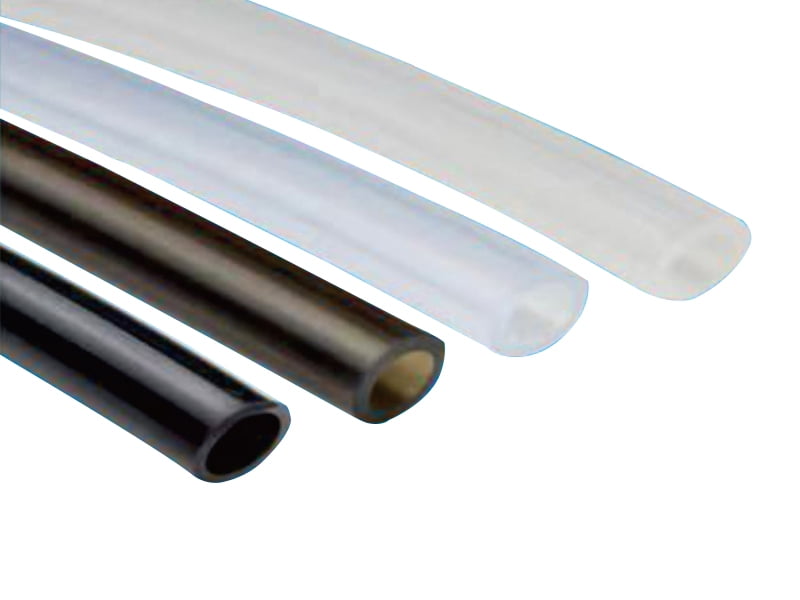manicotto in gomma siliconica: proprietà, applicazioni e manutenzione
cos'è una guaina in gomma siliconica?
Una guaina in gomma siliconica è un rivestimento flessibile e tubolare realizzato in elastomeri siliconici, progettato per fornire protezione, isolamento e tenuta ambientale per vari componenti. Queste guaine presentano un'eccezionale stabilità termica, resistenza chimica e proprietà di isolamento elettrico, rendendole ideali per applicazioni impegnative in diversi settori.

caratteristiche principali con dati tecnici:
resistenza alla temperatura: resiste all'esposizione continua da da -60°C a 230°C (-76°f a 446°f), con picchi intermittenti fino a 300°C (572°F) per formulazioni specializzate.
resistenza alla trazione: varia tra 8-12 mpa (1160-1740 psi), garantendo un'eccellente durata meccanica.
allungamento a rottura: tipicamente 400-700%, consentendo un allungamento significativo senza strappi.
rigidità dielettrica: 18-22 kV/mm, rendendolo un eccezionale isolante elettrico.
durezza Shore: disponibile in vari durometri, comunemente 30a-70a sulla riva una bilancia.
resistenza chimica: resistente alla maggior parte degli acidi, alcali e solventi con un tasso di rigonfiamento <15% when exposed to astm oil #3 at 100°c for 70 hours.
flame resistance: meets ul 94 v-0 standards with a self-extinguishing time <10 seconds.
applications of silicone rubber sleeves
the unique combination of properties makes silicone rubber sleeves suitable for numerous industrial and commercial applications:
1. electrical insulation
in high-voltage applications, silicone sleeves provide >1012 Ω·cm volume resistivity, preventing current leakage and arc tracking. they're used for:
bus bar insulation in switchgear (up to 36 kv systems)
transformer lead protection
high-voltage cable joints and terminations
2. thermal management
with a thermal conductivity of 0.2-0.3 w/m·k, these sleeves are employed in:
heat shrink applications for pipe insulation
thermal barriers in automotive exhaust systems
protective covers for industrial heating elements
3. chemical processing
the <0.5% weight change when exposed to harsh chemicals enables use in:
pump and valve stem protection in chemical plants
laboratory equipment shielding
pharmaceutical processing line components
4. medical devices
medical-grade silicone sleeves (usp class vi compliant) serve as:
protective covers for surgical instruments
insulation for electrosurgical tools
gripping surfaces for prosthetics
5. aerospace and defense
meeting mil-dtl-25988 specifications, these sleeves are critical for:
wire harness protection in aircraft (with -65°c to 200°c operational range)
missile guidance system component insulation
satellite wiring protection against atomic oxygen
maintenance and care guidelines
proper maintenance extends silicone rubber sleeve lifespan beyond the typical 5-10 year service life:
cleaning procedures
mechanical cleaning: use lint-free cloths with isopropyl alcohol (ipa) for surface contaminants
ultrasonic cleaning: effective for intricate designs at 40-60 khz with ph-neutral solutions
steam cleaning: suitable for food-grade applications at <140°c steam temperature
storage conditions
maintain storage temperature between 10-25°c (50-77°f)
relative humidity should be <65% rh
keep away from ozone-generating equipment (storage life reduces by 30% at >0.1 ppm ozone)
performance monitoring
conduct annual dielectric tests (minimum 15 kv/mm maintained)
measure hardness changes (alert if shore a variation exceeds ±5 points)
inspect for compression set (replace if >25% after 22h at 175°c per astm d395)
replacement indicators
visible cracks exceeding 0.5 mm depth
permanent deformation >15% of original dimensions
surface resistivity dropping below 1010 Ω/sq



 English
English

